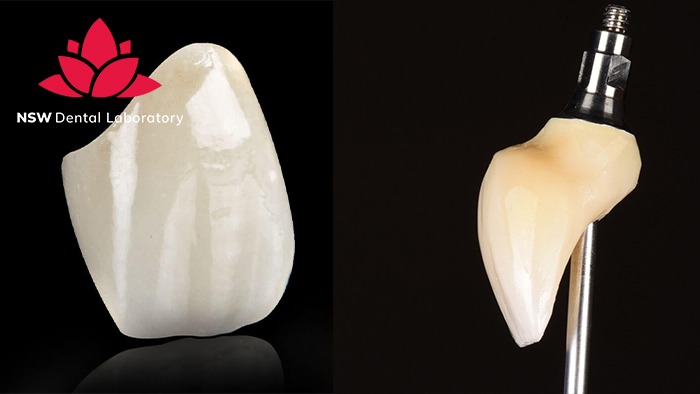Anterior Crowns Done Right: The Ultimate Step-by-Step Guide
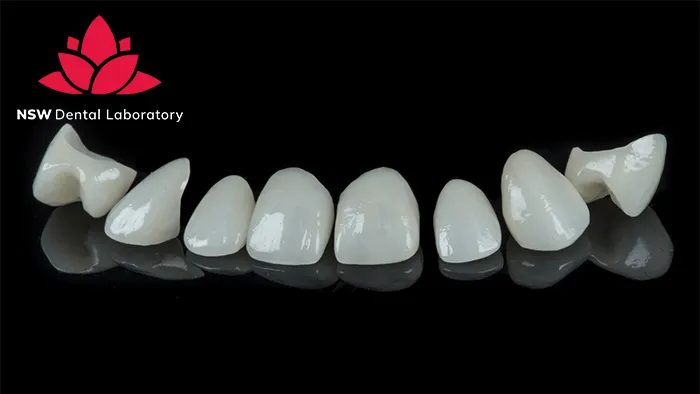
What Are Anterior Crowns?
Anterior Crowns are dental restorations placed over damaged or traumatized front teeth, which include the four incisors and two canines in the upper jaw, as well as the four incisors and two canines in the lower jaw. Their purpose is to repair and restore compromised teeth, addressing issues such as damage, discoloration, or deformation while ensuring durability, functional rehabilitation, and a natural aesthetic appearance.
Unlike posterior crowns, anterior crowns must not only provide function but also meet high aesthetic standards. For this reason, the restoration process for anterior crowns remains a challenge for both dentists and patients.
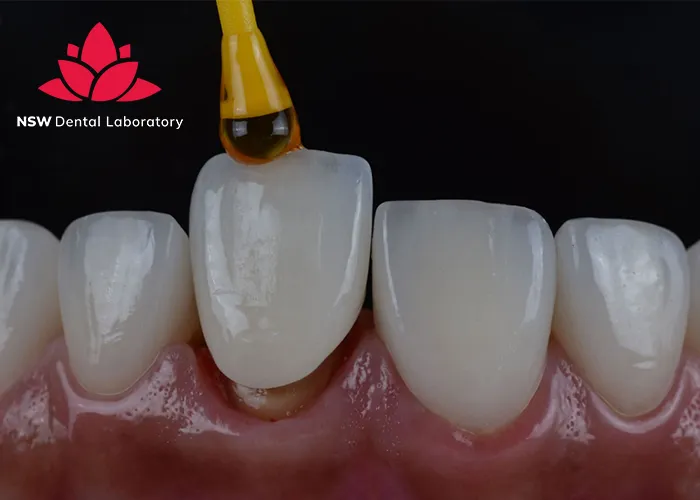
Indications For Anterior Crowns
Anterior Crowns may be recommended for several reasons, including:
- Restoring severely damaged or fractured teeth due to trauma that cannot be repaired with inlays, onlays, or fillings.
- Protecting and maintaining the function and aesthetics of teeth following extensive fillings or root canal treatment.
- Enhancing the aesthetic appearance of teeth affected by discoloration, enamel erosion, or abnormal shape.
- Correcting malocclusion or uneven tooth wear in cases where orthodontic treatment is not feasible or desired.
- Providing support for dental bridges and covering dental implants.
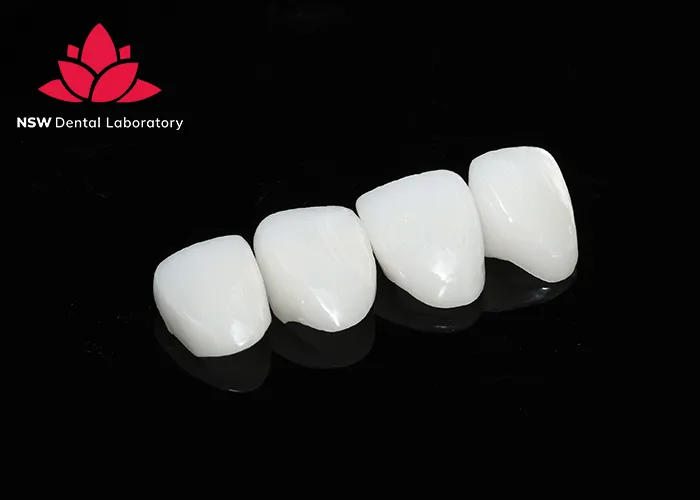
Choosing The Appropriate Material For Anterior Crowns
Selecting the appropriate material for Anterior Crowns is a crucial decision that impacts aesthetics, function, restoration longevity, and overall oral health. The front teeth play a vital role in a person’s smile, speech, and biting function. Therefore, crowns used for these teeth must not only be durable and strong enough to withstand chewing forces and resist fractures but also provide excellent aesthetics, blending harmoniously with natural teeth and maintaining color stability over time.
Below are some of the dental restoration materials that are most suited for anterior teeth restoration:
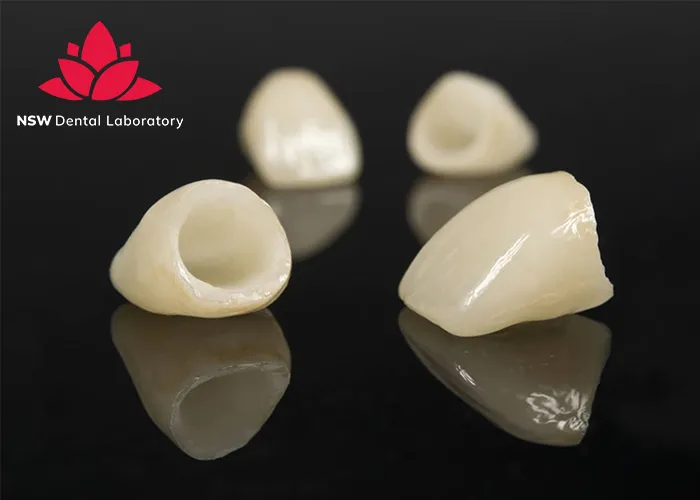
-
PFM (Porcelain Fused To Metal)
Porcelain-fused-to-metal (PFM) crowns were the most popular choice for several decades until the advent of more advanced materials. By combining the strength of a metal substructure with the aesthetic appeal of a porcelain exterior, PFM crowns provide both durability and an excellent cosmetic outcome, making them a great option for premolars and canines.
Despite their advantages in strength and aesthetics, PFM crowns have some potential drawbacks. The porcelain layer is prone to chipping or fracturing due to its lower fracture resistance compared to the metal core. Additionally, over time, gum recession may expose the metal margin, leading to an undesirable appearance.

PFM (Porcelain Fused To Metal)
-
All-Ceramic Crowns
All-ceramic crowns are the next best option after PFM crowns, as they eliminate the need for a metal substructure while enhancing the strength of the core material. With a fully ceramic core, they offer better load-bearing capacity, improved flexural strength, and outstanding aesthetics.
All-ceramic crowns are far more practical than porcelain-fused-to-metal crowns, as they provide numerous advantages and are an excellent choice for patients who may have metal allergies. However, their biggest drawback is the inherent brittleness of ceramics, making them more prone to chipping, fractures, and wear. Additionally, their high cost can be a limiting factor for patients with budget constraints.

All-Ceramic Crowns
-
Zirconia Crowns
Zirconia crowns are made from zirconium dioxide, one of the most advanced and widely used materials in modern dentistry. Known for their superior strength and durability, they are extremely resilient and can withstand high chewing forces, making them less prone to fractures or chipping compared to porcelain. Additionally, zirconia crowns can be easily shade-matched to resemble natural teeth, ensuring a seamless and aesthetically pleasing appearance.
With outstanding advantages in both durability and aesthetics, zirconia crowns can be used for both anterior and posterior restorations. However, despite their many benefits, they also have some notable drawbacks, such as causing wear on opposing teeth due to their high hardness and the limited aesthetics of monolithic/solid zirconia compared to other ceramic options.
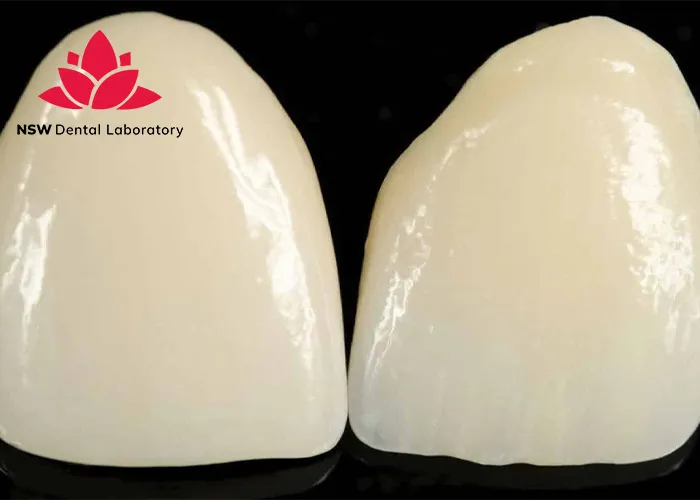
Zirconia Crowns
-
E.max Crowns
Emax crowns are made from lithium disilicate glass ceramic, renowned for their strength and natural aesthetic appeal. The glass-ceramic crystals offer high flexibility and exceptional flexural strength, allowing for the creation of thin, lightweight restorations that permit light transmission, closely mimicking the color and translucency of natural teeth.
For cases requiring maximum aesthetics, such as anterior crowns, Emax crowns are an unparalleled choice, offering both durability and superior esthetics. However, they are not a widely chosen option due to their relatively high cost, which can be a challenge for patients with limited budgets.

E.max Crowns
Overall, ceramic crowns appear to be the most reasonable and widely preferred choice due to their exceptional advantages, with Emax crowns being the most ideal option.
In summary, selecting the appropriate material for Anterior Crowns depends on various factors, including individual needs, preferences, specific dental conditions, and budget. To determine the most suitable option, it is best to consult with a dentist before making a final decision.
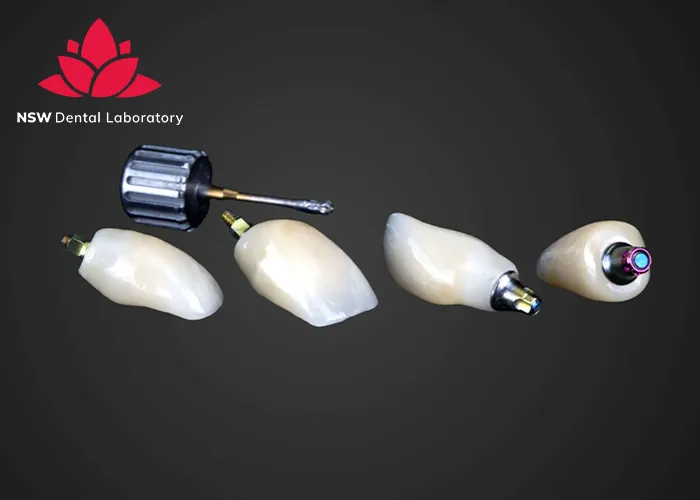
5-Step Workflow For Anterior Crowns
The procedure for placing the Anterior Crowns is similar to that of any standard crown procedure. To ensure that the crown has a natural shape, color, and proper chewing function, the detailed procedure is as follows:
- Examination and Treatment Planning: The procedure begins with a consultation where the dentist evaluates the condition of the tooth, develops a treatment plan, and selects the appropriate crown material based on the patient’s dental condition, aesthetic needs, durability requirements, and budget.
- Tooth Preparation: After evaluating the oral condition and discussing treatment options with the patient, the dentist will proceed with tooth preparation by removing a portion of the enamel to create space for the Anterior Crowns. This ensures that the crown fits properly within the mouth. The amount of tooth reduction required depends on the type of material used for the restoration.
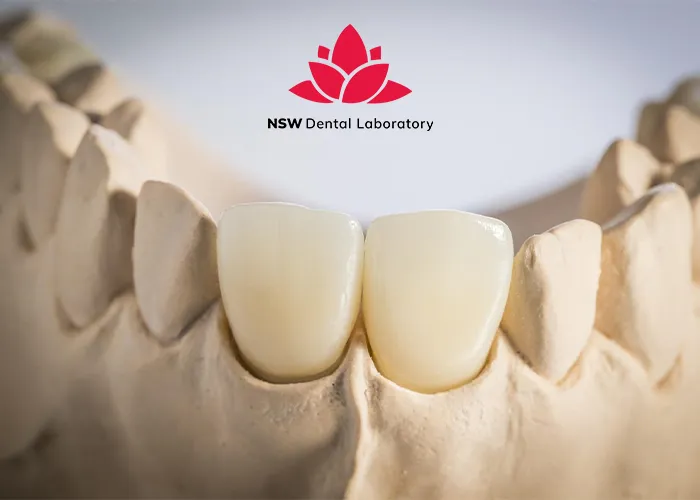
- Impression Taking: The next step in the procedure involves taking an impression of the tooth using either the traditional impression technique or digital scanning. These impressions are then sent to the dental laboratory for the fabrication of Anterior Crowns, ensuring a proper fit and a natural match in shape and color to the patient’s teeth. This process typically takes 1–2 weeks, so the dentist will place a temporary crown to protect the tooth and temporarily restore its function and aesthetics.
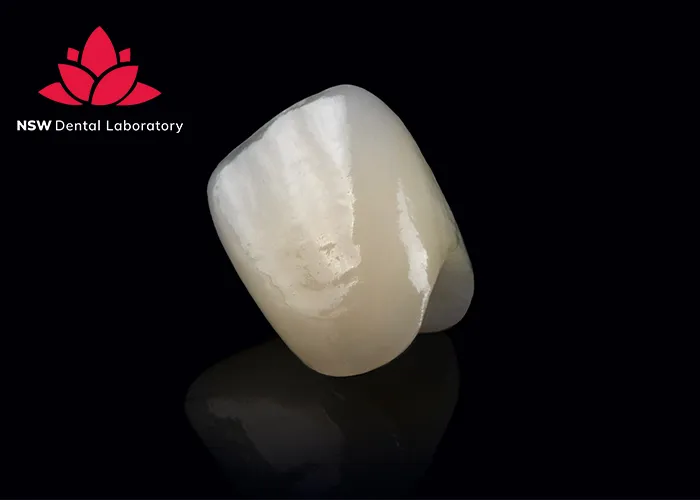
- Permanent Anterior Crown Placement: Once the dental laboratory has completed the fabrication of the Anterior Crowns, the dentist will remove the temporary crown and try the permanent one. The dentist will assess the color, shape, and size of the crown, as well as evaluate the bite alignment, making any necessary adjustments to ensure a perfect fit. If the Anterior Crowns meet all functional and aesthetic requirements, the dentist will proceed with permanently cementing them using specialized dental cement. Finally, the dentist will provide instructions on how to care for the crown and schedule a follow-up appointment.
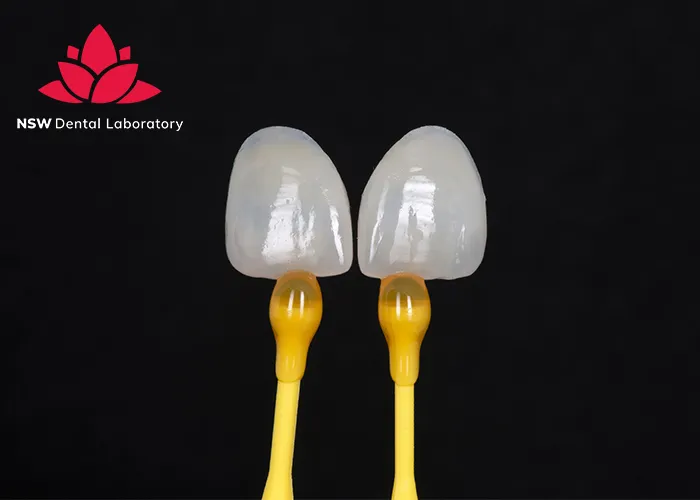
Anterior Crowns At NSW Dental Lab
The restoration of Anterior Crowns is a clinically challenging procedure that requires significant effort, as patients often have higher aesthetic expectations for their front teeth. This presents one of the greatest challenges for both dentists and dental lab technicians in their pursuit of creating more advanced and aesthetically pleasing dental solutions for the anterior region.
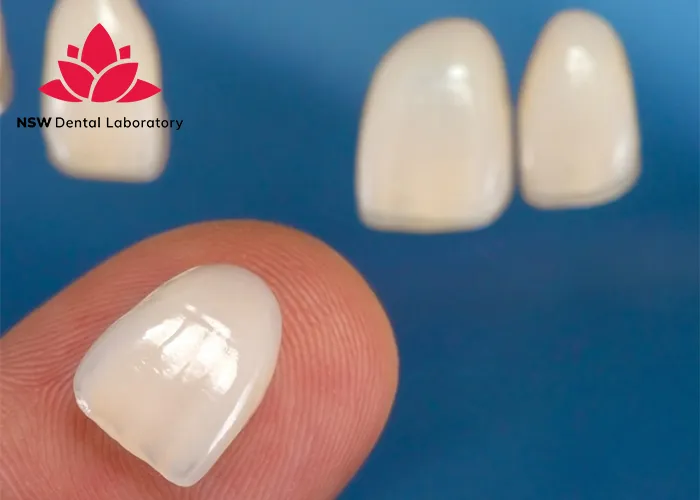
Modern dentistry has witnessed the development of new materials and techniques, marking a significant advancement in dental restorations. Anterior Crowns can be made from materials such as Zirconia, Lithium Disilicate, or any other suitable material tailored to the patient’s specific needs and oral health. Choosing the right material not only impacts the quality and durability of the crown but also highlights the importance of working with an experienced and highly skilled dental lab.
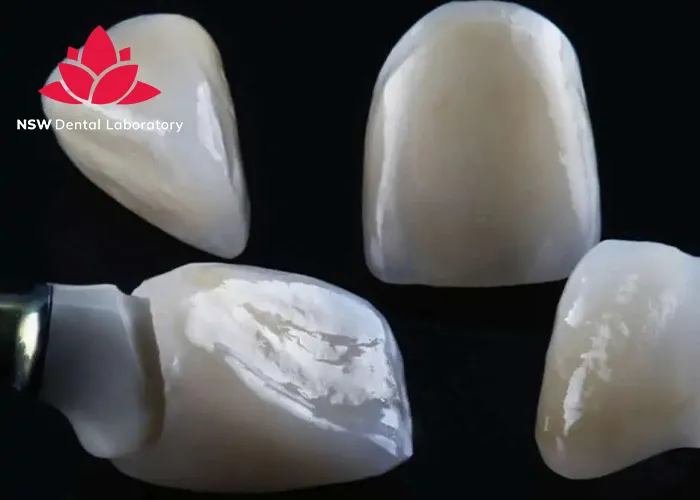
At NSW Dental Lab, we have an optimized workflow designed to minimize the need for remakes of your anterior crowns. Contact us today and let NSW be your strategic partner in achieving long-term growth in the dental industry.



